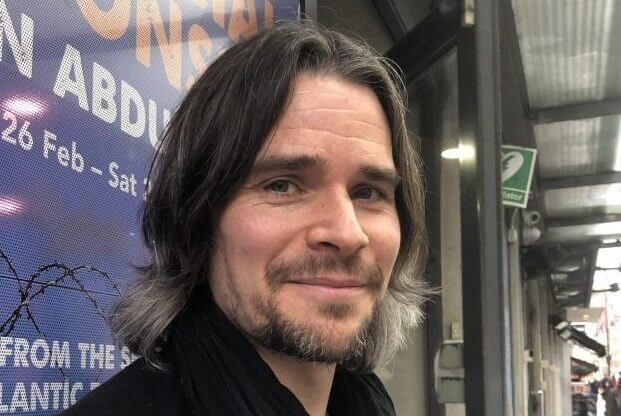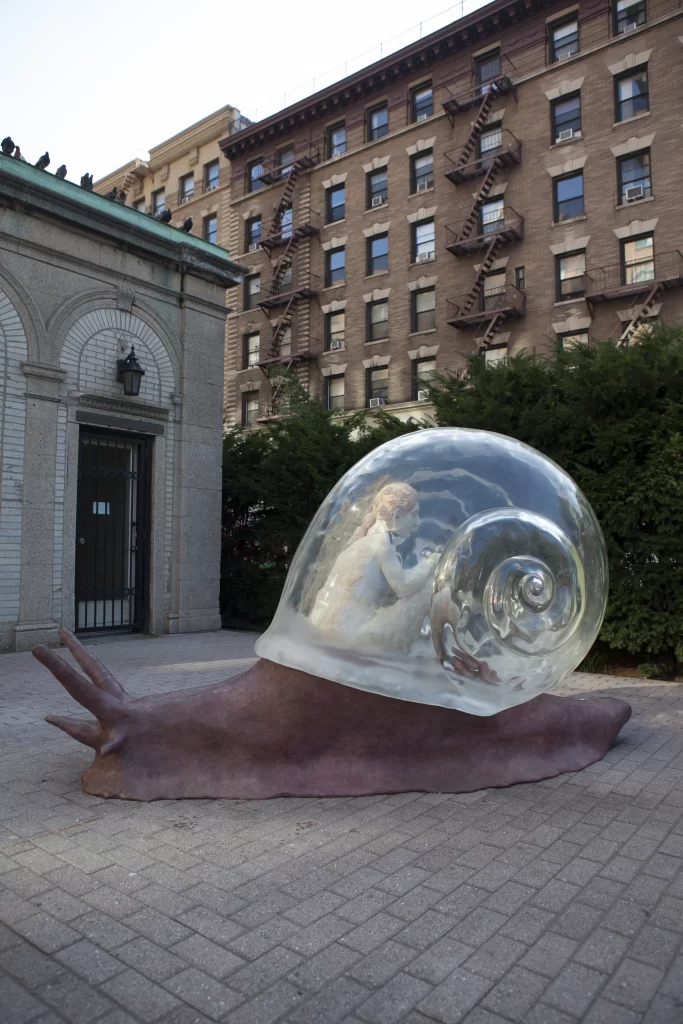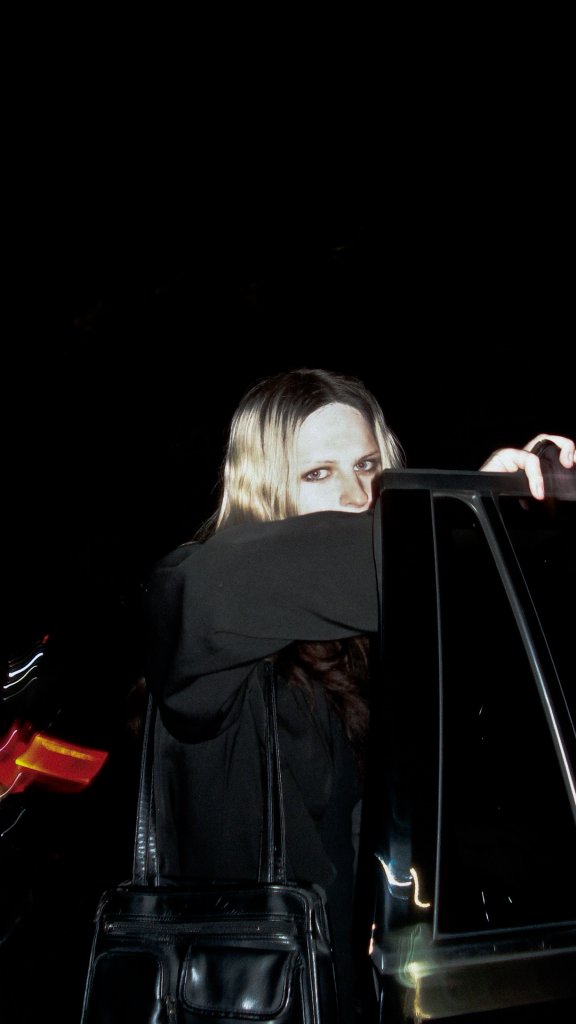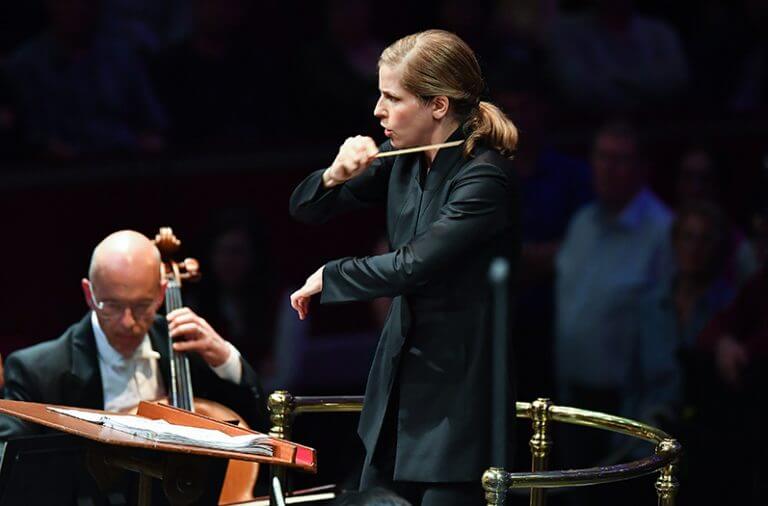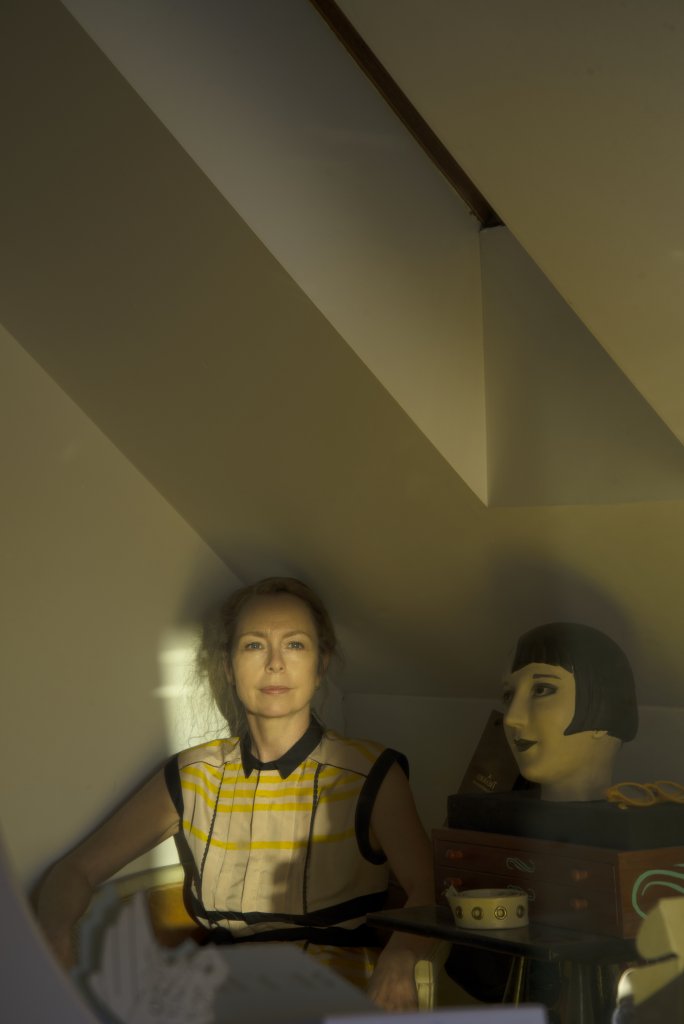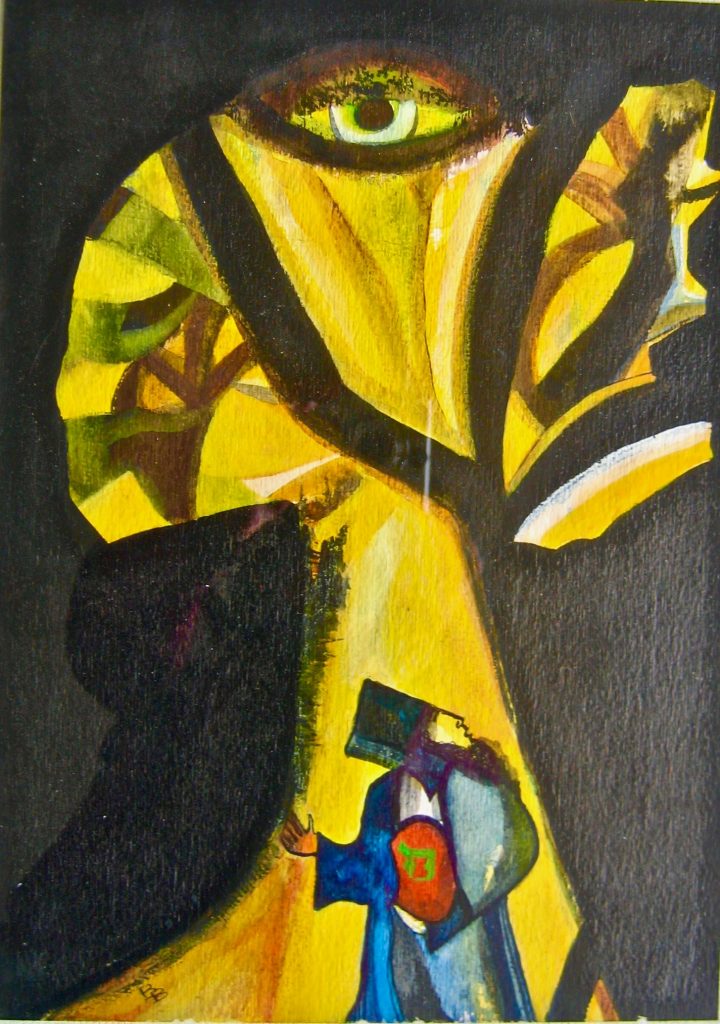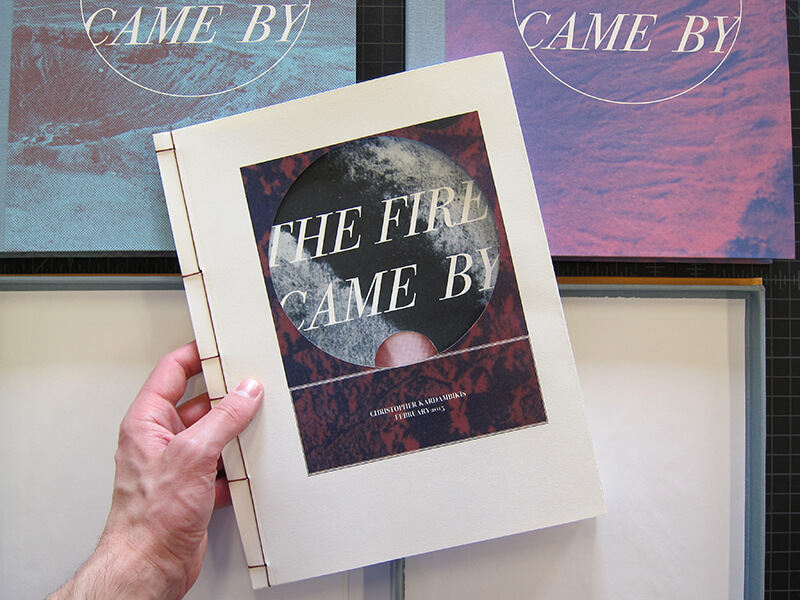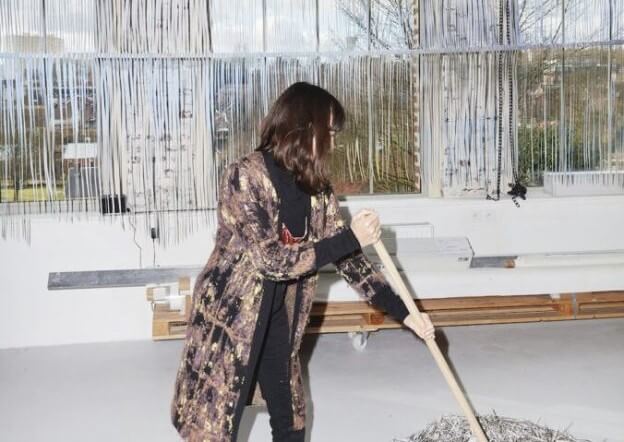Bare With Me: Hernease Davis
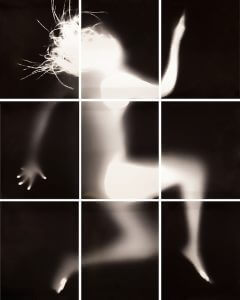
Hernease Davis stretches herself and stories across photograms, cyanotypes, performance and craft to emphasize self-care through the artistic process. Her photograms and cyanotypes are created by relaxing on a grid of photo paper in the light or dark, imprinting the physical and psychological body. She embeds her images with laborious hand-crocheting of improvised stitches on undeveloped paper in the dark, to then expose the encased photograms. The stitch is taken further by arm-crocheting massive blankets that immerse the viewer in a psychological womb, with soft layers of her voice singing a cappella, creating a rich rotation of chords around a single note. Her exhibition Mark of the Question for the Question at Spaceworks, Gowanus (Brooklyn) in 2019 showcased work created during her six-month residency at the Nfinit Foundation. FRONTRUNNER met Davis at her Nfinit studio at Spaceworks to discuss embodiment, impulse, and the layered and loaded processes of her work.
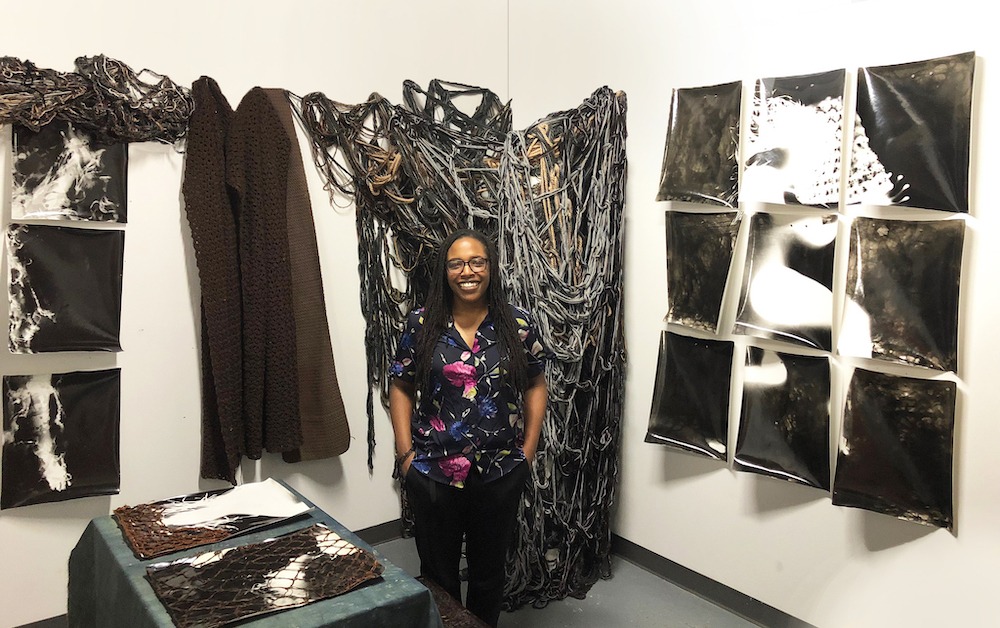
Brooklyn, New York, 2019.
When did your work become incorporated with healing, self-care, and coping mechanisms?
I began this series out of a need to create a space for my own healing and to grieve. As I have changed, I will say it’s an ongoing process of trying to connect with myself and just being very present with my needs, desires and wants within my process. When I’m working, I’m continually asking myself, okay, what do you want to do now? Which stitch do you want to crochet to get across this paper? Do you even like this piece? I just finished a crochet/photogram two nights ago in my room in the dark. Even though I hadn’t crocheted the entire sheet, it felt finished. But those are things that I think are basic for a lot of artists, and for me it’s not so much.
I use photography to figure out my impulses, and that started in grad school. Certain things started becoming repetitive and instinctual. I realized later on that I was using photography to understand my thoughts and feelings. At the beginning of this series, I took to all of those instincts. I first used photography to cope in the midst of a pretty chaotic time in my life, and to figure out what the fuck was going on.
So I started with these emotional photographs where I just walked around with my camera and paid attention to places and objects that compelled me. I would stop and make a picture. From working instinctually this way, I began using photography as a physical space and not just a type of subconscious or unconscious gesture. I was like, okay, let’s shift and break away from what you usually do. I had this desire to put myself into the medium, and I had been wondering what it would be like to actually lie down on the paper, using the surface as a place to rest, and letting go of my control over the resulting image. Put the camera down. In a similar method to my emotional photographs, I made a rule for myself to lie down on my photographic paper and to just feel my feelings, then do whatever I wanted in response, and leave it as open as possible. I don’t plan anything, I remind myself to not overthink anything, but just to react, do whatever it is I need.

A Womb of My Own (Mistakes Were Made in Development), 1 (2014)
Silver gelatin photograms
48” x 60”
Courtesy of the artist
It sounds like it’s an intuitive movement, or not the intellect directing. That, however my body is responding to whatever I’m experiencing in my life at this time, that’s going onto the paper.
Yes, particularly for the recent Bare With Me, Foundation series where I’m improvising crochet stitches onto the photo paper, it has been a helpful exercise in honing in on figuring out what I want to make and how I want to build an image with yarn and, eventually, my photographic impression. Working in the dark has forced me to slow down and to focus in a different way. I always say it’s really hard for me to approach the work that way, because I have to shut a lot of things off. I can’t have my phone, and I can’t look at television. I have to plan out my time, so I’ll download a podcast want to listen to for the next hour and a half. It can get physically taxing, and so it’s also been about listening to my body and stopping when my back hurts – understanding when it’s time to stretch or maybe stop and go to bed.
And then with this new venture into cyanotype, I can actually work in the studio with the lights on and with my headphones in. It’s a different type of meditative, therapeutic process that’s different from the way I usually work, which is in the dark or under specialized light, and so now I haven’t made a photogram the same way in a while.

Bare With Me, Foundation, 5 (2018)
Silver gelatin photogram and silk-cotton yarn
16”x 20”
Courtesy of the artist
Is there a relationship between light and dark? I see it visually, and that the dark or light environments are conditions of your work. Does this start to become the content?
Yeah. It’s something that I’ve been conscious of, but not necessarily consciously embedding it in the work because of light and the dark is in the process. I really enjoy the fact that darkness and sunlight are therapeutic but also photographically necessary. That I make these pieces in the dark and under the sun are not necessarily the thing I want people to know or understand. The darkness and the sun are part of the “womb” I’ve been creating, like this meditative space in my studio, listening to music and deciding how to selectively develop these new cyanotype pieces. To expose the canvas I’ve been working with, I have to lay outside. It’s been very cloudy, so it’s been hard to find time to actually make them. I carry around treated canvas in my backpack all the time, just in case the sun comes out. The sun came out the other day when I was on my way to a freelance job near Brooklyn Bridge Park. On my way there, my meeting was pushed back, so I raced toward the park and laid out a piece. I also am very aware that I need Vitamin D, because that’s how I stabilize my mood. Being outside, to have sun just practically and psychologically is really soothing. To make my cyanotypes, I have to be completely still for at least ten minutes. You’re going to lie [t]here, be really still, take in the sun and rest because it’s good for you and because the process requires it. But even in the dark room and in my apartment, I used to set the paper completely in the dark without specialized lights. That was purposeful to create this very quiet and safe space. The darkness in that sense – it’s just for me.
The body is monumental in your work – the tendrils of the blankets that sustain warmth and comfort. There are these layers of embodiment in the range of your materials. How do you feel about these intimate gifts to the viewer?
That’s exactly what I hope is coming across, because the idea of a womb is there, although I’ve always been very wary of whether or not if the way I’ve been using the concept of a womb is too abstract. It’s a psychological space where I tend to my self. It’s doesn’t have anything to do with water, or even a body. So, from that mental place, my own interpretation of what a womb means is very a physical thing. So the more I work, the more I make and the more I show, the more I have been thinking about how I can thoughtfully share something rather emotional and abstract with others.

A Womb of My Own (Mistakes Were Made in Development)
Installation view
Visual Studies Workshop, Rochester, New York, 2018
Courtesy of the artist
In my blanket crochet installation piece in Rochester at the Visual Studies Workshop, I wanted the sound in that installation to be very directed, where there would be a distinct difference in how the viewer experienced the sound pieces inside the installation versus walking around the gallery. The closest I have gotten to that is in my studio right now. In that corner, with all of those same blankets creating a room within a room, you must go inside to hear the piece. There’s sound in that corner that you can’t hear from the outside, so you have to be in there, surrounded by this crochet cocoon. I want to translate as clearly as I can what I mean by my own womb and this happens all the time in ways I’d never expect.
Is there a tradition of knitting and crochet with your family and ancestors?
One of my favorite aunts taught me how to crochet twice because I forgot once, and then had to go back to her and relearn it. We would go over to her house and it was like, “this is something for you guys to do”, and she would teach us basic stitches. That’s been something that she passed on to me. I also have this amazing blanket that one of my cousins made for me. She started it when I was born, finished it when I was 18, and gave it to me when I went off to college. It’s crocheted, with a bunch of colors, and it’s been with me for 18 years.
I started crocheting on my own more seriously in grad school. I had been working with the blanket my cousin crocheted for me, but had grown tired of what I was making from that, which were digital images and small books. I decided to use my own crochet in the darkroom to see what came of it. I created this project based off of the tradition of the Cartes de Visite, entitled Goumine (pronounced Goo-meen). Typically, Cartes de Visite were formal portraits printed on little cards that people would send to loved ones. For my project, I created a fictional story about how these families had their own crochet stitch. I made different stitches, and then attributed names [to them] that you would come across in Louisiana. Like the Bouchard Stitch, or the Dabney Stitch, the Mamou Stitch. I created this narrative around [them] and then used their crochet stitches as an overlay in the darkroom. Unlike traditional Cartes de Visite, I used images from my neighborhood at the time, Astoria (Queens). So the prints were like a half-traditional photograph, half-photogram. I crocheted a square using the fictional family’s stitch and then laid it on top of the paper under the enlarger. I exposed a negative onto paper that had the crochet square placed on top of it.
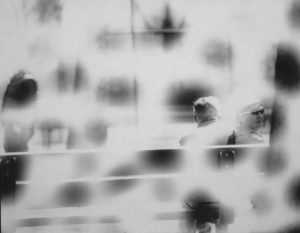
Goumie Series, Palmetto – Dabney Family (2014)
10” x 8”
Silver gelatin fiber print
Courtesy of the artist
This developed into crocheting through the photo paper and image in your Bare With Me, Foundation series. What does it feel like to pierce and sew through your photograms?
It felt almost sacrilegious at first to go through the paper because it’s very permanent, and it might seem violent. It took me a long time to figure out the method. Would I want to do the full puncture? Do I want the punctures to be really clean? But now, I’m poking the holes a lot faster than I used to, because at first it felt very consequential, like it was a big deal.
It still feels like flesh, though.

